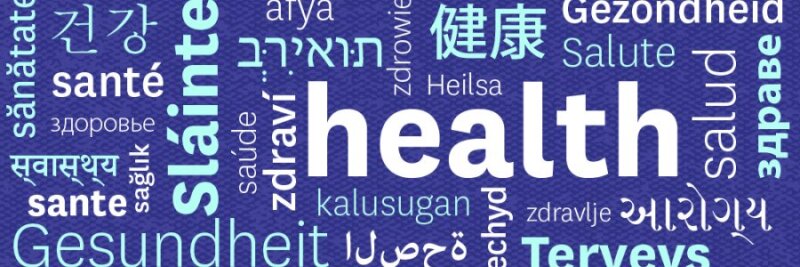People from across the world come to the United States seeking a better life for themselves and their families. Once they arrive, they generally tend to congregate in similar areas and live amongst each other, which creates a feeling of community and connectedness in a place that isn’t their native land.
For healthcare professionals, it’s not uncommon to encounter patients whose native languages are something other than English. This can become challenging when it comes to providing treatment, both for the patient and the healthcare provider. As the U.S. becomes more culturally, the ability to speak multiple languages has become increasingly important in the healthcare industry.1
According to 2015 census estimates, there are roughly 56 million Hispanic people living in the U.S., accounting for more than 17 percent of the country’s total population.2 It should come as no surprise then that Spanish is the second most commonly spoken language in the United States.3 If the number of speakers continues to grow at this rate, the U.S. could become the largest Spanish-speaking country in the world by 2050.4
Spanish isn’t the only language that can help you expand your reach and communicate more effectively as a healthcare professional. The Asian population is currently the fastest-growing minority group in the country and is expected to grow by nearly 115 percent, reaching over 34 million people, by 2050.5 This means it’s even more important to consider the value of learning a second language to better support your community’s health.
Census Bureau findings also indicate that people who speak Chinese, Korean and Vietnamese may have a harder time learning English than someone with a Spanish-speaking background, which can have heavy implications in healthcare.6 Although interpreters can be utilized to help bridge language barriers, this is usually not an ideal solution, as it means bringing a stranger who is probably unfamiliar with the patient and their needs into their medical conversation.
More so, being able to speak a patient’s native language can also mean helping their family to better understand the diagnosis and available treatment options.7
Multilingual professionals have the opportunity to connect with non-English-speaking patients in a more meaningful way, helping to provide a more comfortable experience and a better quality of care by communicating in a way the patient can fully understand. This skill can also help healthcare professionals better understand and assess the patient’s needs, ideally determining what level of care is required.
In addition to helping to improve communication and patient care within your current role, adding another language to your resume can also expand the scope of opportunities for your career.8 Bilingual healthcare professionals have access to a wider range of in-demand jobs than candidates who are fluent only in English.1 A brief glance at healthcare-related job boards will show you just how in demand bilingual professionals are in healthcare. Knowing a second language can make you an invaluable asset within the healthcare community, helping you to pursue a number of roles throughout the industry.
Interested in learning more about [public health]()? Take a look at the possibilities of a public health career or some of the public health crises of the last decade.
- The New American Economy. (March 2017). Not Lost in Translation: The Growing Importance of Foreign Language Skills in the U.S. Job Market. Retrieved on April 25, 2017, from newamericaneconomy.org/wp-content/uploads/2017/03/NAE_Bilingual_V6.pdf
- U.S. Census Bureau. (October 2016). FFF: Hispanic Heritage Month 2016. Retrieved on April 25, 2017, from http://www.census.gov/newsroom/facts-for-features/2016/cb16-ff16.html
- CNN. (March 2017). Hispanics in the US Fast Facts. Retrieved on April 23, 2017, from http://www.cnn.com/2013/09/20/us/hispanics-in-the-u-s-/
- Diez, M. (June 2015). By 2050, the US Could Have More Spanish Speakers than Any Other Country. Retrieved on April 23, 2017, from http://www.qz.com/441174/by-2050-united-states-will-have-more-spanish-speakers-than-any-other-country/
- Cox, W. (January 2015). Asians: America’s Fastest Growing Minority. Retrieved on April 23, 2017, from http://www.newgeography.com/content/004825-asians-americas-fastest-growing-minority
- Dinan, S. (November 2015). Asian-American Immigrants Have More Difficulty Mastering English than Hispanics. Retrieved on April 23, 2017, from http://www.washingtontimes.com/news/2015/nov/3/more-350-languages-spoken-us/
- Bendfeldt-Diaz, P. (March 2016). Why We Need More Latino Nurses. Retrieved on April 23, 2017, from http://www.growingupbilingual.com/2015/education/need-latino-nurses/
- Manafian, L. Market Your Bilingual Skills. Retrieved on April 25, 2017, from http://www.monster.com/career-advice/article/market-your-bilingual-skills

